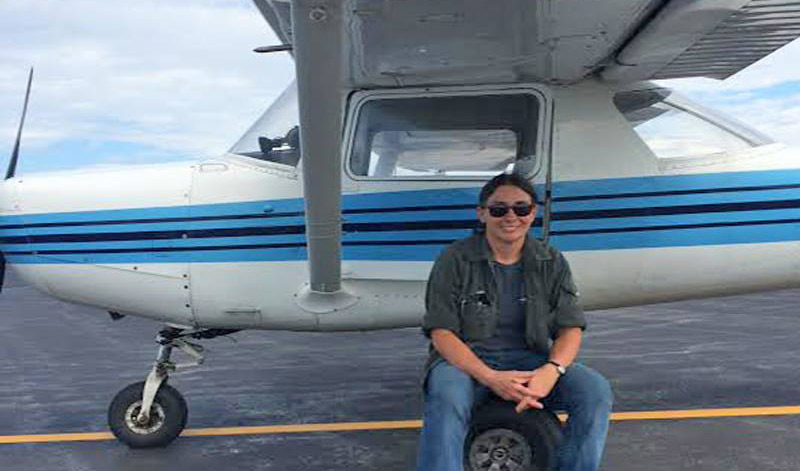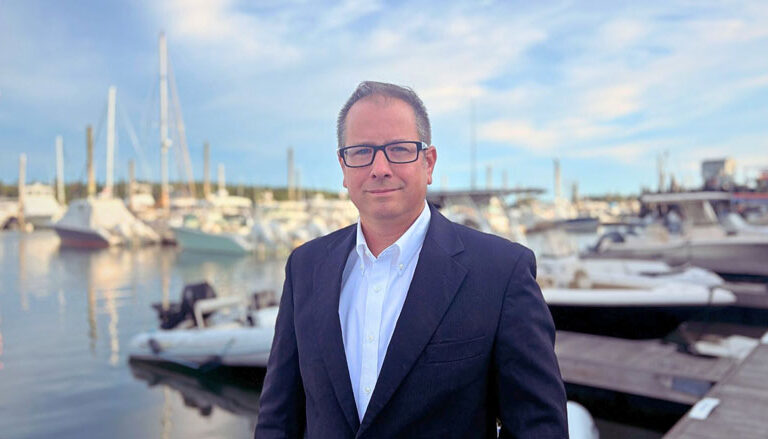Eva Murray lives on Matinicus year-round, where she writes, runs a seasonal bakery, volunteers as an EMT, and runs the island’s solid waste/recycling program. She is the author of three books, most recently Island Birthday, an illustrated book for children, which shines a light on the logistics challenges and the close-knit communities any islander might experience.
A year or two ago, I was skimming through the latest issue of a popular magazine for student pilots (not quite true: I was studiously devouring every word, twice) and was a bit surprised by an article suggesting that flying to islands would be a neat thing for any newly-licensed beginner to consider as they broaden their private piloting experience.
While I understand that most people, in most parts of the country, hear the word “island” and imagine Martha’s Vineyard, not Criehaven, I still thought it a mistake to recommend the practice, and wrote the magazine’s editors a stern letter, roughly thus:
“Some island airstrips are private, requiring advance permission, but even where that isn’t an issue, challenging weather such as gusty crosswinds and sudden fog, primitive gravel runways, and a lack of common airport services make many islands less than beginner-friendly. Around here, you won’t even find a vending machine, not to mention a tie-down, a taxi, fuel or a bathroom. Forget about a mechanic!”
I was quite the killjoy and never did hear back from the magazine.
I live on Matinicus Island. Ever since I started pilot training a hundred years ago, friends have been merrily assuring me, “Now you can fly yourself to the island!” A few people—presumably those who flunked arithmetic in elementary school—sing out pronouncements like, “Now you’ll have to buy your own airplane, so you can go back and forth any time you want, for free!” To be fair, those mathematically-challenged folks say the same thing about going by boat.
There are good reasons why a beginner pilot—and I certainly consider myself a beginner—might remain cautious and measured when it comes to island flying. Island flying is a specialty, and it takes practice. You don’t just “go for it” without planning and preparation—not if you’ve got much sense.
Island airstrips are short; some are extremely short. Student pilots are supposed to demonstrate short-strip takeoffs and landings in order to be licensed, but few keep those skills sharp unless they live near a little back-country airport.
Weather is any pilot’s concern, but offshore, weather can get strange, and there is little to no margin for error. If you find yourself in the peculiar, “squirrely” winds that are common at Matinicus, can you, reliably, land “over the barn” and between the trees? Then, do you have engine enough in that tiny trainer airplane to safely get out of here?
Those without first-hand experience in small planes may assume any flight is one of two animals: either everything goes textbook and it’s an easy pleasure trip, or there’s a fireball. In fact, there is a wide spectrum of options in between, including the expensive and embarrassing minor ding-up where you end up on the front page of the local paper but nobody is hurt.
In a remote location, the expense of getting the slightly damaged (but no longer legally flyable) plane to the maintenance hangar can easily run into truckloads of money. A nicked propeller or a crunched wheel strut on an island is enough to ruin your whole day, and your checkbook.
Last summer, as we practiced maneuvers over Belfast in preparation for my check-ride (final licensing exam), Sandy Reynolds, my instructor, started in with that business about flying to Matinicus. However, he said it with a twinkle in his eye, knowing that it would get me going. All through my training with Sandy he’d come up with subjects for random idle conversation, and spring the questions and the chit-chat on me when I was supposed to be busy aviating, navigating and communicating on the radio. He’d go on about any trivia—the Byzantine Empire, anything—just to see if I’d get distracted. I learned to say, “Hang on a minute, Sandy, I’m kind of busy.” That was what I was supposed to say.
This time I just grinned back at him and said, “You know, Sandy, I can weld a little, too. You don’t see me working on submarines.”
Eva Murray lives on Matinicus year-round, where she writes, volunteers as an EMT, and runs the island’s solid waste/recycling program. She is the author of three books, most recently Island Birthday, an illustrated childrens book, which shines a light on the logistics challenges and the close-knit communities any islander might experience.





